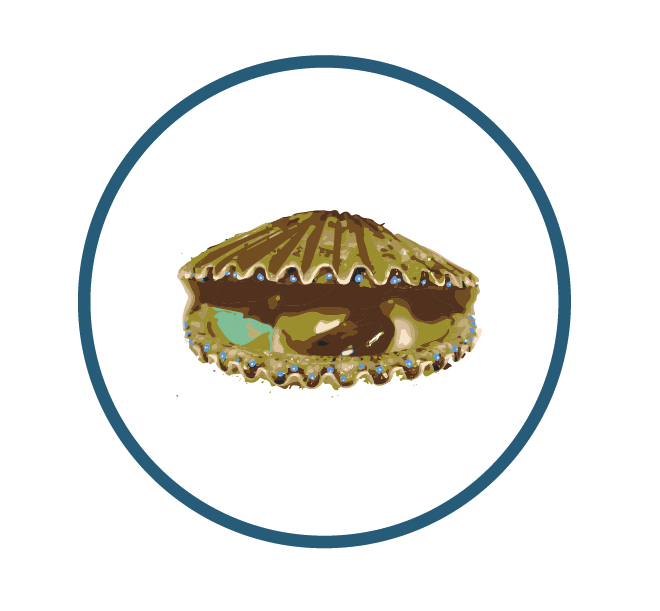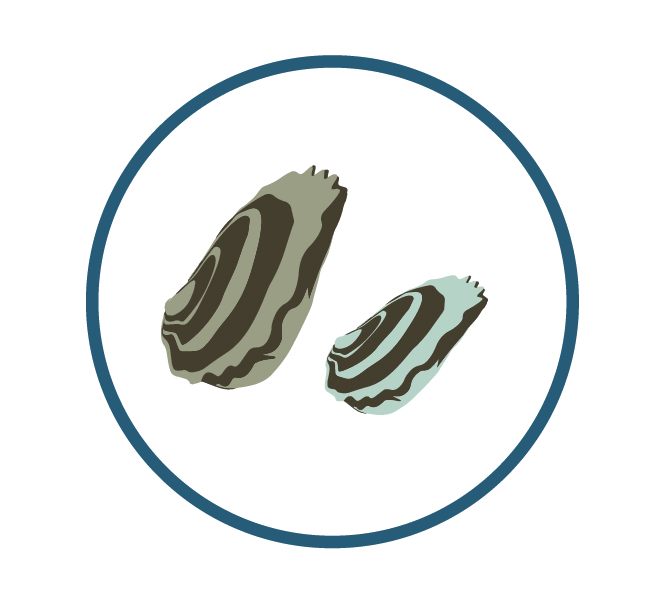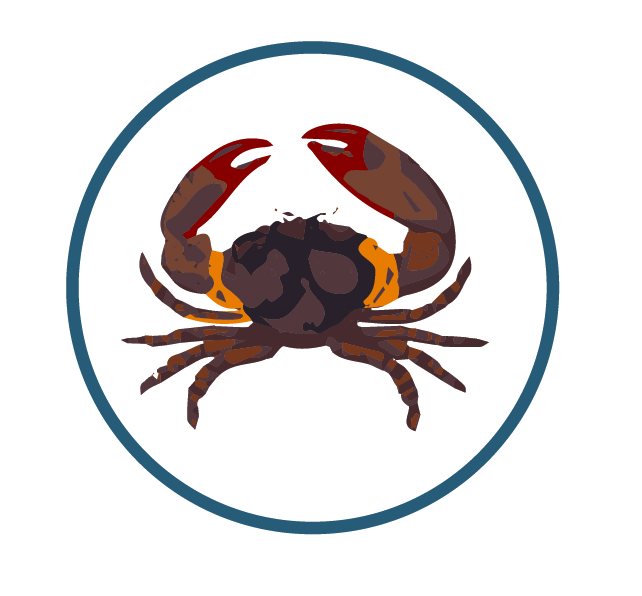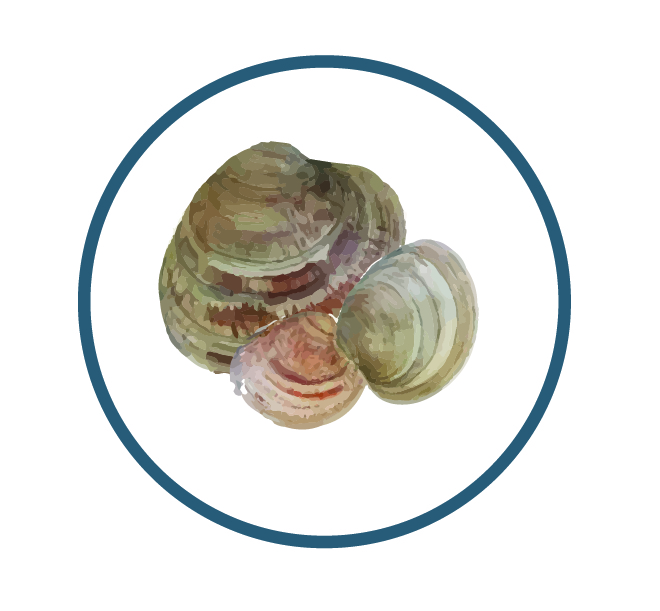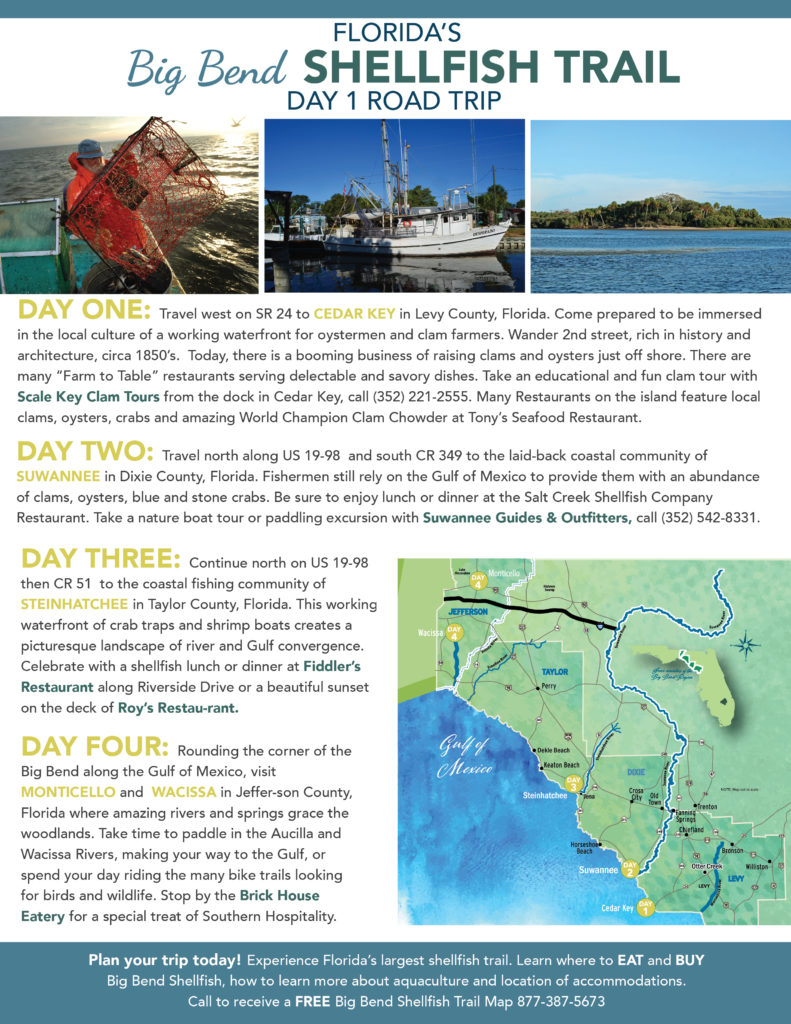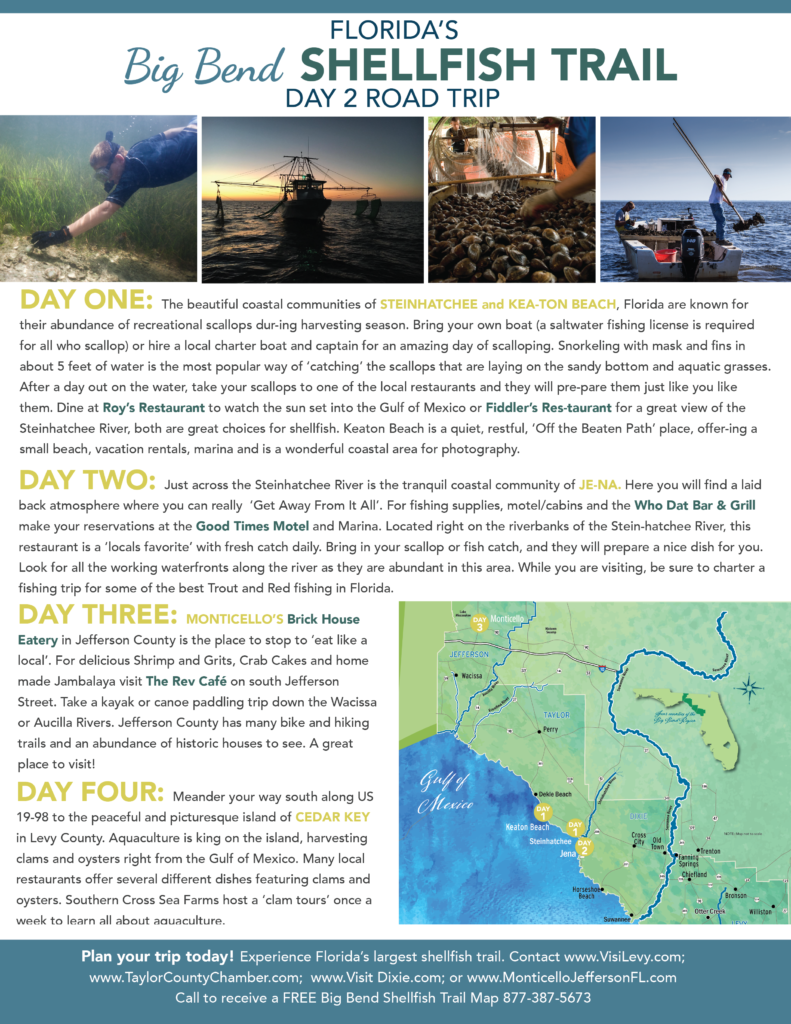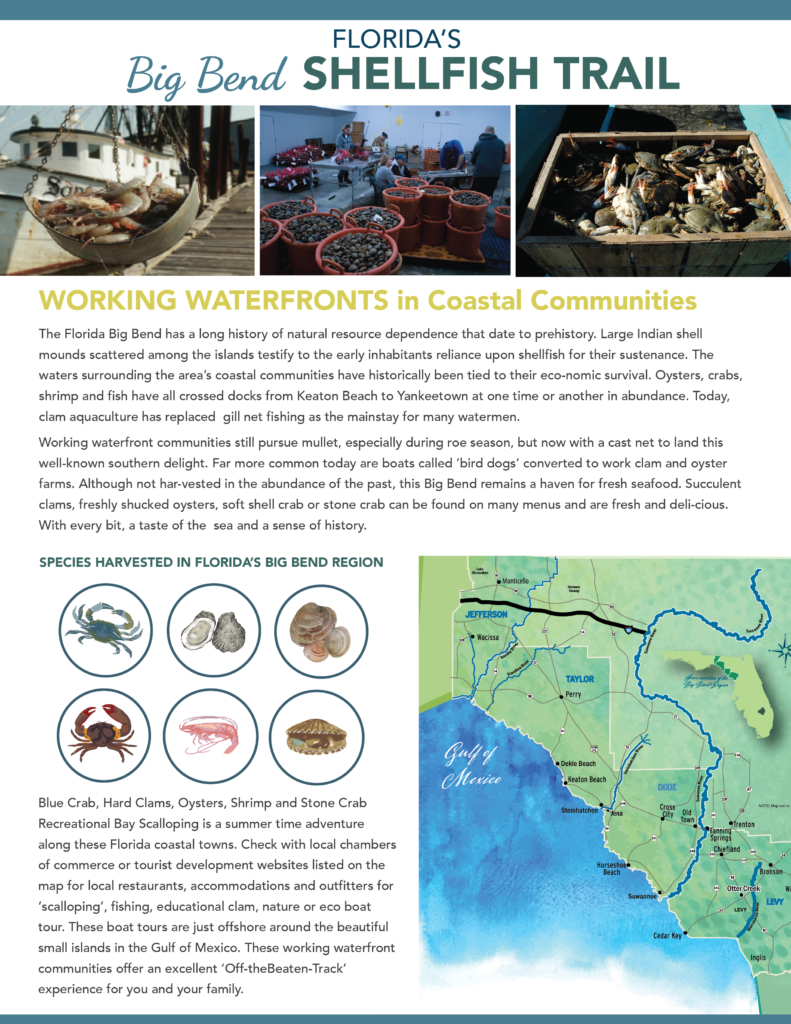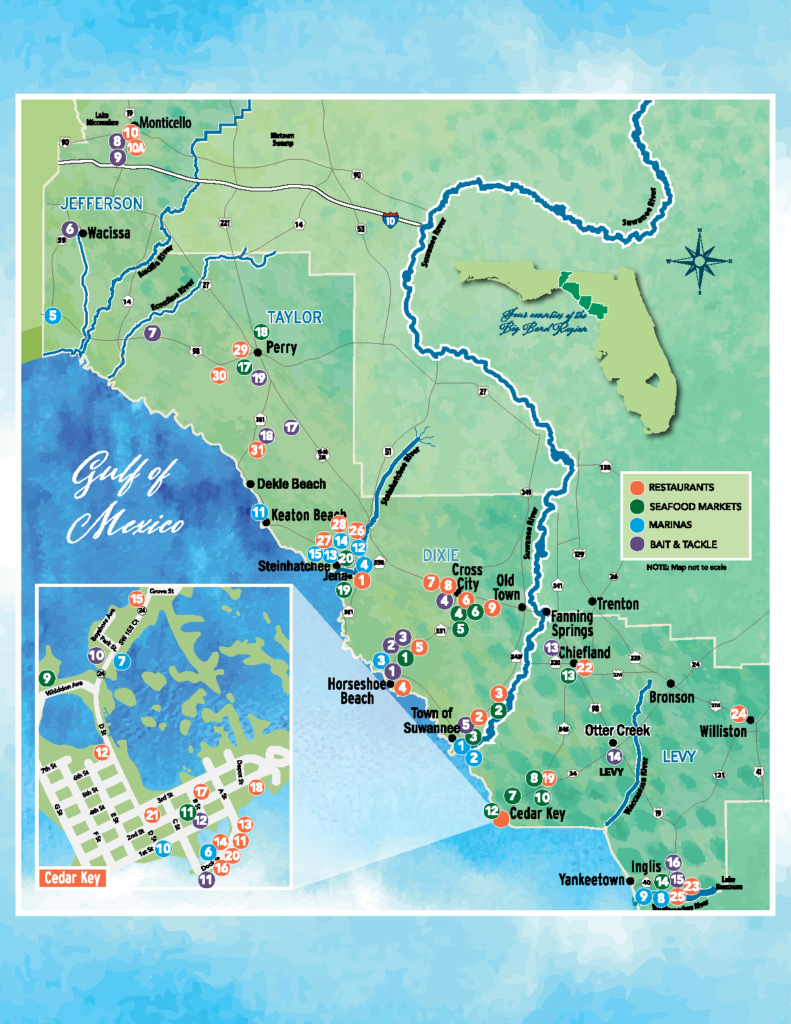Shellfish of the Big Bend
About
The Big Bend has a long history of natural resource dependence that dates to prehistory. Large Indian mounds scattered among the islands testify to the early inhabitants’ reliance upon shellfish for their sustenance. The waters surrounding the area’s coastal communities have historically been tied to their economic survival. Oysters, crabs, shrimp and fish have all crossed docks from Steinhatchee to Yankeetown at one time or another in abundance. But since 1995, when a statewide gill net ban was imposed, harvesting of mullet and other marine fish, as well as a “way of life,” came to an end. Today, shellfish aquaculture has replaced gill net fishing as the mainstay for many watermen. They still pursue mullet, especially during roe season, but now with a cast net to land this well-known southern delight. Far more common today are boats commonly called “bird dogs” converted to work the clam farms.

Interactive Trail Map
Interactive Trail Map
PHOTO AND VIDEO CREDITS
PHOTO AND VIDEO CREDITS
University of Florida/IFAS, Carlton Ward Jr., Eric Zamora, Pat Bonish, Florida Fish and Wildlife Conservation Commission, Visit Florida

